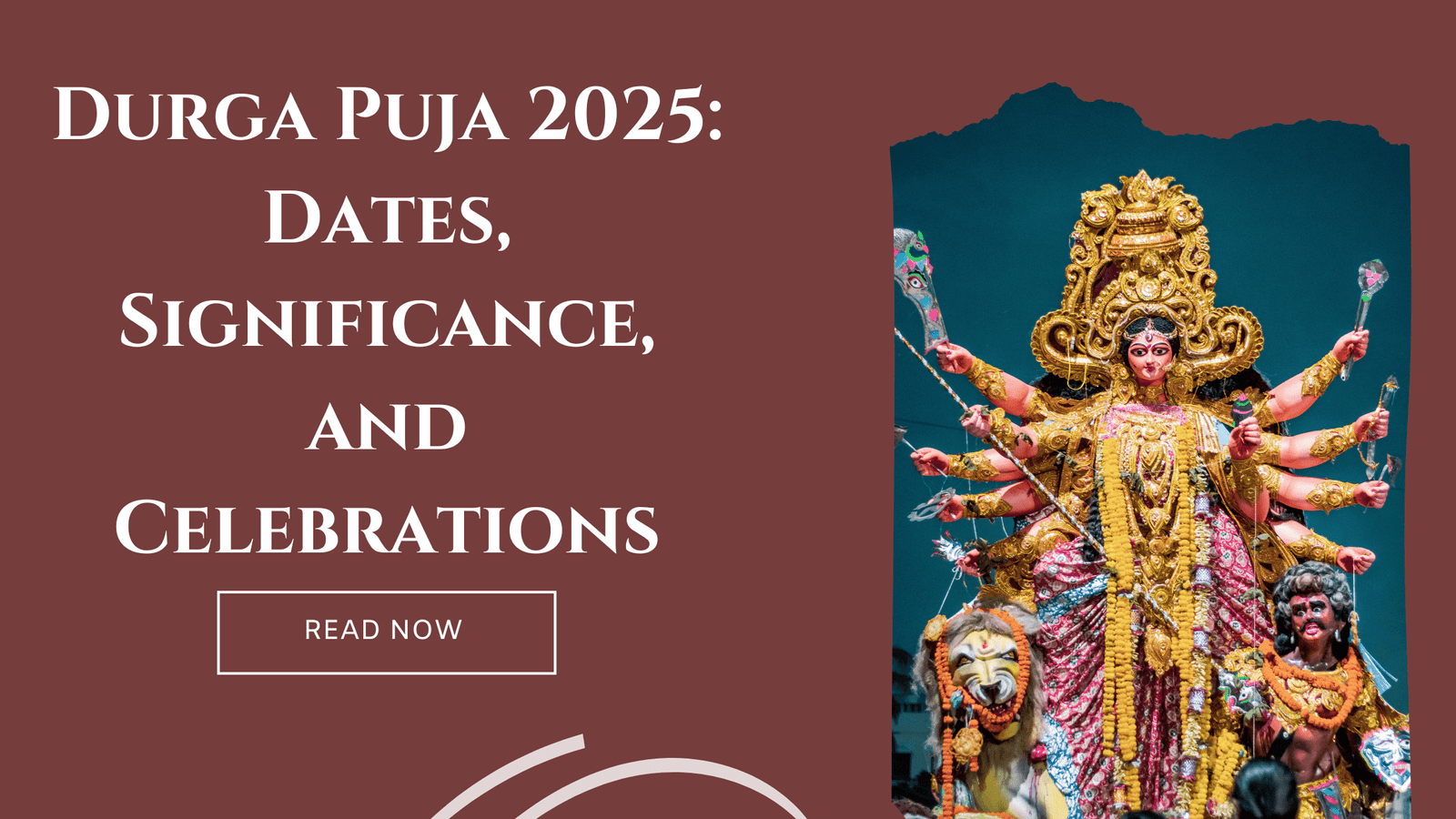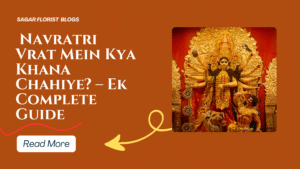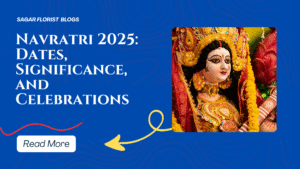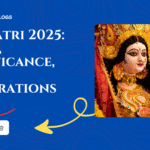Durga Puja 2025: Dates, Significance, and Celebrations
Durga Puja, one of the most revered festivals in India, celebrates the victory of Goddess Durga over the demon king Mahishasura. This grand festival symbolizes the triumph of good over evil and is observed with immense devotion and enthusiasm, especially in West Bengal, Assam, Bihar, Odisha, and other parts of India.
In 2025, Durga Puja will be celebrated from September 30, 2025, to October 4, 2025. Let’s dive into the key dates, rituals, and importance of this festival.
Durga Puja 2025 Dates and Schedule
- Mahalaya: September 23, 2025
- Marks the beginning of Durga Puja and the arrival of Goddess Durga on Earth. Devotees listen to the chantings of Mahishasura Mardini, invoking the goddess’s descent.
- Shashti (Bodhan): September 30, 2025
- Goddess Durga is welcomed on Earth with rituals. Bodhan is performed to awaken the goddess.
- Saptami: October 1, 2025
- The first day of Durga’s battle with the demon Mahishasura. Pran Pratistha (invocation of life) is performed on this day.
- Ashtami: October 2, 2025
- The most significant day of Durga Puja. Sandhi Puja, marking the transition between Ashtami and Navami, is performed during an auspicious hour. It is believed to be the moment when Goddess Durga killed Mahishasura.
- Navami: October 3, 2025
- The final day of worship and celebrations before the goddess’s departure. Devotees offer bhog and partake in Maha Aarti.
- Dashami (Vijaya Dashami): October 4, 2025
- The day when Goddess Durga returns to her heavenly abode. Sindoor Khela and Visarjan (immersion of Durga idols) mark the end of the festival.
Significance of Durga Puja
Durga Puja is not only a religious festival but also a cultural extravaganza. It celebrates the power of the divine feminine, symbolizing strength, prosperity, and wisdom. Here are some key aspects of the festival’s significance:
- Triumph of Good over Evil: The festival signifies the victory of Goddess Durga over Mahishasura, representing the triumph of righteousness and moral values.
- Worship of Shakti (Divine Power): Goddess Durga embodies Shakti, the ultimate feminine force. Her nine forms are worshipped over the nine days, each symbolizing different powers.
- Cultural Celebration: Durga Puja is more than a religious event—it’s a celebration of art, music, food, and traditions. It brings communities together and creates a spirit of unity and festivity.
- Social Harmony: The festival fosters social bonding as people from all walks of life come together to celebrate, irrespective of their differences.
Rituals and Celebrations
Durga Puja is marked by various rituals, grand processions, and the worship of elaborately crafted idols of Goddess Durga. Here’s how the festival unfolds:
- Mahalaya: The festival begins with Mahalaya, the day when devotees invoke Goddess Durga to descend on Earth. People wake up early to listen to the chanting of Mahishasura Mardini, which narrates the story of Durga’s victory over the demon king.
- Bodhan: On the day of Shashti, Bodhan is performed, welcoming the goddess to her earthly abode. People decorate pandals (temporary structures) with flowers, lights, and beautifully crafted idols of Goddess Durga.
- Kola Bou Ritual: On Saptami, the ritual of Kola Bou (banana bride) is performed, representing the wife of Ganesha. A banana tree is dressed in a sari and bathed in holy water, symbolizing Goddess Durga.
- Anjali and Bhog: Ashtami is the most significant day of the puja, when devotees offer pushpanjali (flower offerings) and bhog (holy food) to the goddess. The atmosphere is filled with devotion, and large crowds gather to chant prayers and seek the blessings of Durga.
- Sandhi Puja: Performed between Ashtami and Navami, Sandhi Puja is a crucial ritual. It commemorates the moment when Goddess Durga killed Mahishasura.
- Sindoor Khela: On the day of Vijaya Dashami, women participate in Sindoor Khela (playing with vermillion), a joyous ritual where they smear sindoor on each other, symbolizing the goddess’s farewell and the victory of good over evil.
- Visarjan (Immersion): The festival concludes with the immersion of the Durga idols in rivers or water bodies, symbolizing her return to her heavenly abode. People bid an emotional farewell to the goddess, praying for her return the following year.
Flowers for Durga Puja
Flowers are an integral part of Durga Puja rituals, used for decorating the idols, pandals, and as offerings to the goddess. Popular flowers for Durga Puja include:
- Red Hibiscus: Associated with Goddess Durga, red hibiscus is believed to symbolize her fierce power and is offered during the puja.
- Lotus: Representing purity and spiritual enlightenment, lotus flowers are often used in puja rituals.
- Marigold: Bright and vibrant marigolds are commonly used to decorate pandals and are also offered to the goddess.
You can order fresh, premium-quality flowers for your Durga Puja celebrations from Sagar Florist, ensuring that your worship is complete and spiritually fulfilling.
Conclusion
Durga Puja 2025 will be an exciting and vibrant festival that unites devotees in celebrating the power of Goddess Durga. With grand rituals, cultural programs, and community bonding, it is a time to reflect on the triumph of good over evil and seek the goddess’s blessings for prosperity and happiness.
For fresh Durga Puja flowers and decorative services, connect with Sagar Florist to make your puja celebrations beautiful and memorable!






